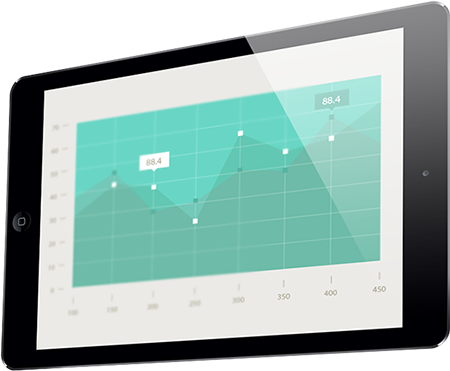 The last several years have seen a growing shift of advertising dollars leaving the more traditional mediums of print media and moving to various areas online. Within this realm it can still be a challenge for advertisers to sift through the expanses of the internet and find the best places to spend their money online. This is where online directories have been able to gain a solid foothold in the market. Most modern advertisers see directories websites as an attractive option, the two main reasons for this are fairly simple: highly targeted audiences and easily measurable ROI.
The last several years have seen a growing shift of advertising dollars leaving the more traditional mediums of print media and moving to various areas online. Within this realm it can still be a challenge for advertisers to sift through the expanses of the internet and find the best places to spend their money online. This is where online directories have been able to gain a solid foothold in the market. Most modern advertisers see directories websites as an attractive option, the two main reasons for this are fairly simple: highly targeted audiences and easily measurable ROI.
Highly Targeted Audiences
With common uses including local search sites, product directories, membership guides, and yellow page sites online directories by nature are highly focused sites. They typically have a common focus by geographical location, industry, subject matter or all of the above. This format tends to bring people together, typically very like-minded groups of people who share the same interests and habits. This provides the ideal landscape for potential marketers and advertisers who are looking to reach a very specific type of audience to get their ads in front of.
Think Niche
Many niche businesses and industries have benefited through the use of online directories. They have made it easy to build sites with focused subject matter and relevant listings and pair them with a blog or set of articles and social media posts that are all related to a very specific industry or niche.
No longer would you need to read a national golf publication to find the best local courses and instructors in your area, instead you could a find local site like LakeNonaGolfDirectory.com and be able to quickly find golf course and instructors right in the area of Lake Nona. This level of targeting is beneficial for both the user and for potential advertisers. From the advertisers perspective they would be able to know that any ads listed on this directory site would be targeting a predominantly male audience between the ages of 35-55, who live in the Lake Nona area and are interested in golf. Gaining access to this highly targeted audience is something that many would be willing to spend their advertising dollars on.
Additionally, platforms such as eDirectory utilize a search feature. This can help potential sponsors to know exactly what keywords and phrases site visitors are searching for and which ones they would like to pay to be found under.
Let’s see an example:
There is an online directory site for Los Angeles area salons. Right off the bat, advertisers would already know that these site visitors are from or near the Los Angeles area and that they are interested in things that a salon can offer, such as beauty products, hair styling, make up, manicures, pedicures and more. Taking it one step further, the directory site owner can share with potential advertisers that the most frequently searched term on their site is “gel manicures”. This can provide a perfect opportunity for a local Los Angeles based salon to post ads related to their gel manicure pricing options and upcoming specials. Plus they could pay for a Premium listing on this directory and make sure they include “gel manicures” as primary keywords in the settings for their listing, ensuring they would show up during searches of this term.
Measurable ROI  As a marketer, web banners, sponsored content, and email newsletter sponsorships provide keen insight into the success of promotional messages, advertising offers and how responsive a given audience is to that message and offer. These are key factors for marketers and advertisers to be able to gauge their success and determine whether they find their spending to be worthwhile and something they will continue to invest in. A lack of such data can be nerve-wracking at best for an advertiser and lead to rash, uninformed decisions being made.
As a marketer, web banners, sponsored content, and email newsletter sponsorships provide keen insight into the success of promotional messages, advertising offers and how responsive a given audience is to that message and offer. These are key factors for marketers and advertisers to be able to gauge their success and determine whether they find their spending to be worthwhile and something they will continue to invest in. A lack of such data can be nerve-wracking at best for an advertiser and lead to rash, uninformed decisions being made.
Luckily, this data is easily attainable through online directory site analytics and reporting, plus pairing your site with platforms like Google Analytics and Saleforce can provide an even higher level of insight. This nformation will provide a directory site owner with valuable selling points that can be shared with potential advertisers to portray the potential for success and gaining a favorable return on investment (ROI) from their ad.
How many people see the ads? How many people clicked on them? Of those people, how many people visited the ad’s website? Which pages did they click on when they were there and at what point did they abandon the site? How many people opened the email, how many people that opened that email came to the company’s site, or furthermore, how many people made a purchase because of that ad? The ways to break down and dissect the numbers into cost per lead, cost per conversion, cost per click—they’re all limitless.
Here is a good article by Forbes about the 10 Online Marketing Metrics You Need to Be Measuring. As a directory site owner, one can use these metrics to not only learn from the data and improve their site but also to gain insight on their site users and gather information that can be shared to help sway potential advertisers and sponsors to become involved with the site.
Interested in developing a profitable directory? Want to discuss ideas about how to better monetize your existing site? Send an email to: marketing@edirectory.com

